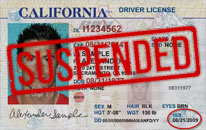
Sobriety checkpoints, or “DUI roadblocks,” are popular with law enforcement because they make it possible to catch a large number of drunk drivers in one night. These checkpoints also have a delicate legal status because they are an exception to the norm for police. Normally, officers must have probable cause to pull you over. But DUI checkpoints allow them to stop everyone passing through randomly.
To be allowed to do this, police have to follow extremely detailed rules. Any breach of protocol means that they are breaking both the law and your constitutional rights. This is why a DUI lawyer can often defend your case if you are arrested at a Los Angeles checkpoint.
If you were arrested for DUI at a checkpoint, you need to investigate whether all rules were followed. If they were not, you may be able to get your entire case thrown out.
How Are DUI Checkpoints Legal?
DUI checkpoints are encouraged because they are believed to act as a deterrent to drunk driving. The California Supreme Court has found them constitutional because they are considered “administrative” procedures. Just like airport security can search your bags without a warrant, police at roadblocks can check for signs of intoxication without probable cause.
That does not mean that checkpoints have never been challenged, however. In one landmark case, the California Supreme Court ruled that checkpoints are only constitutional if they follow specific guidelines. Some of these guidelines include Ingersoll v. Palmer.
- A supervising officer must be present to make all constitutional decisions
- There must be an unbiased set of criteria for stopping motorists
- Drivers should not be detained any longer than necessary
In total, the Ingersoll decision put down a set of eight rules, which have developed into a large number of regulations used at most DUI checkpoints to keep them legal.
How to Know If a California DUI Checkpoint is Legal
The most important rules of a DUI checkpoint include:
- It must be advertised in advance. DUI checkpoints cannot be put up without warning as a surprise. They must be advertised in advance and are typically noted on local news.
- It must be marked for approaching motorists. This is an important rule from the perspective of DUI defense. If the checkpoint is not marked, or not until you are already in the “chute” and ready to be stopped, then it is illegal. It is not enough to simply put out road cones—signs must indicate the official nature of the checkpoint.
- There must be a way for motorists to turn off and avoid the checkpoint. The purpose of signage is to give motorists a chance to leave or bypass the checkpoint rather than go through it. If officers do not leave this kind of “escape route,” it is both a safety issue and a constitutional issue.
- There must be a supervising officer overseeing it. Rank and file officers cannot conduct a checkpoint on their own. There needs to be a supervising officer present who personally makes all the decisions related to constitutionality. That means that one person is personally responsible for the placement of signs, the way motorists are stopped, etc.
- The criteria for stopping vehicles must be neutral. The police either have to stop everyone who passes through or they need neutral criteria for choosing who to stop. For example, if they stop every third car, that is random and therefore neutral. If there is evidence that they stopped you because of your ethnicity, the condition of your car, or other biased factors, your arrest was potentially illegal.
- Adequate safety precautions must be in place. Checkpoints are a safety issue because people are being taken out of their cars and asked to do field sobriety tests(FSTs) next to a large stream of impatient drivers. All parts of the roadblock, from the escape route to the FST area, must be designed with safety in mind.
- The timing, duration, and location of the roadblock must all be reasonable. A roadblock that happens during rush hour is unreasonable because it stops a huge number of people and causes massive traffic delays. Similarly, a roadblock located on a bend or in a low-visibility area might be unreasonable.
- Drivers shouldn’t be detained any longer than necessary. In general, drivers should only be stopped long enough to ask for their license and check for visible signs of intoxication. This can easily be done in 30 seconds or less. If drivers are being detained longer without signs of intoxication, the roadblock may be illegal.
Navigating DUI Checkpoints: Know Your Rights and Responsibilities
Law enforcement officers use DUI checkpoints to serve an important public safety purpose, but sometimes these roadblocks turn into unreasonable searches. It is normal to have reasonable suspicion if someone is driving erratically, but it is equally important to know your legal rights when encountering a police officer.
Learn what is within your legal rights to do at checkpoint locations.
Am I Allowed to Leave a DUI Checkpoint?
Yes. If you approach a DUI checkpoint, you should carefully and lawfully put on your turn signal and use the escape route or turnaround. Simply leave and find another route. As long as you do this without breaking traffic laws or causing a hazard, you are obeying the law. It is your right to bypass an upcoming checkpoint.
Unfortunately, many people don’t realize this or don’t realize what the checkpoint is until the escape route is behind them. While they can be safety measures, they can also be an inconvenience to drivers. We urge you to fight your DUI arrest. DUI checkpoints are on shaky ground and are often open to challenge in court.
Can I Refuse a Breathalyzer Test at a DUI Checkpoint?
While laws regarding breathalyzer test refusal vary by jurisdiction, it is generally within your rights to refuse a breathalyzer test. This test’s primary function is to verify if you are under the influence of alcohol after signs of impairment are demonstrated, such as erratic driving.
Refusing a breathalyzer test may result in administrative penalties, such as the suspension or revocation of your driver’s license, even if you are later found not guilty of DUI charges.
I Wasn’t Read My Miranda Rights During a DUI Stop
If you did not read your Miranda rights during a DUI stop, you may be wondering about the legal implications of this omission. Miranda rights, which include the right to remain silent and the right to an attorney, are designed to protect individuals from self-incrimination during custodial interrogations.
Miranda rights typically do not need to be read during routine traffic stops or DUI checkpoints. If law enforcement conducts an unlawful vehicle search or fails to follow strict procedures at a sobriety checkpoint, it may result in the checkpoint being deemed unconstitutional.
In such cases, any evidence obtained through the illegal activity could potentially be suppressed in court. A knowledgeable defense attorney can assess the specific circumstances of your situation, advise you on your rights as a driver, and determine the best course of action to protect your interests.
What Evidence from a DUI Checkpoint Can Be Used Against Me?
DUI checkpoints are designed to identify intoxicated drivers, but they also raise concerns about the evidence that can be used against individuals stopped at these checkpoints.
Law enforcement may gather evidence through various means, including observations of the driver’s behavior, such as slurred speech or bloodshot eyes, as well as the odor of alcohol emanating from the vehicle. Additionally, cheek swabs may be used to detect the presence of drugs.
DUI checkpoints must adhere to proper checkpoint procedures, so if law enforcement conducts an illegal search or fails to follow established protocols, the evidence collected may be subject to challenge by a skilled defense lawyer.
What Are the Most Common Successful Defenses Against a DUI Checkpoint Arrest?
The most common defenses include the following:
- The checkpoint or escape route was not marked clearly, and no advance warning was given
- Officers were not neutral in who they stopped
- Field sobriety tests were not conducted properly
- Mouth alcohol or GERD affected your breath test
Hiring a top-rated DUI stop attorney will ensure that there is a reasonable basis for your stop. The legality of sobriety checkpoints isn’t always clear to licensed drivers who lack legal experience. Our lawyers will use sufficient evidence to create defenses for unlawful searches, chemical test refusals, and more.
You Could Win Your DUI Case
Have you been charged with DUI? We can connect you with an experienced Los Angeles DUI lawyer and get you a free consultation. It is a police officer’s job to make roads safer in a way that is not in violation of citizens’ rights. A trusted criminal defense attorney can clarify the legal requirements of your DUI stop.
Contact our DUI lawyers and get your free consultation today.







